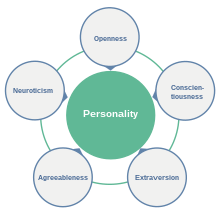Personality is the intricate tapestry of characteristics, traits, and behaviors that define who we are. To comprehend the intricate nuances of personality, psychologists have developed various theories that offer insights into the dynamics of human nature. In this blog, we will delve into two significant personality theories—the Big Five personality traits and the humanistic approach—each shedding light on different dimensions of our complex selves.
1. The Big Five Personality Traits:
The Big Five, also known as the Five Factor Model, is one of the most widely accepted and studied theories in personality psychology. It posits that personality can be distilled into five fundamental dimensions, often referred to as the OCEAN traits:
Openness to Experience: Reflects a person’s curiosity, imagination, and willingness to engage in novel experiences.
Conscientiousness: Involves traits such as organization, dependability, and self-discipline.
Extraversion: Measures the level of social engagement, assertiveness, and emotional expressiveness.
Agreeableness: Captures qualities like empathy, cooperativeness, and the inclination to get along with others.
Neuroticism: Pertains to emotional stability, anxiety levels, and the ability to manage stress.
The Big Five provides a comprehensive framework for understanding individual differences and has practical applications in fields such as hiring, psychology, and self-awareness.
2. The Humanistic Approach:
The humanistic approach to personality, championed by psychologists like Abraham Maslow and Carl Rogers, centers on the belief that individuals have an inherent drive for self-actualization and personal growth. This theory emphasizes the importance of subjective experiences, conscious choices, and the uniqueness of each person.
Maslow’s hierarchy of needs outlines a pyramid of human needs, ranging from basic physiological needs to the pinnacle of self-actualization. Rogers, on the other hand, introduced the concept of unconditional positive regard and emphasized the role of the self-concept in shaping personality.
The humanistic approach underscores the significance of personal agency, self-awareness, and the pursuit of authenticity in shaping one’s personality and life trajectory.
Conclusion:
The Big Five personality traits and the humanistic approach represent divergent yet complementary perspectives on understanding personality. While the Big Five offers a quantifiable framework that captures broad dimensions of personality, the humanistic approach delves into the depths of individual consciousness, emphasizing personal growth and self-actualization. These theories enrich our understanding of the human experience, reminding us that personality is a multi-faceted mosaic shaped by both inherent traits and the pursuit of self-discovery.




